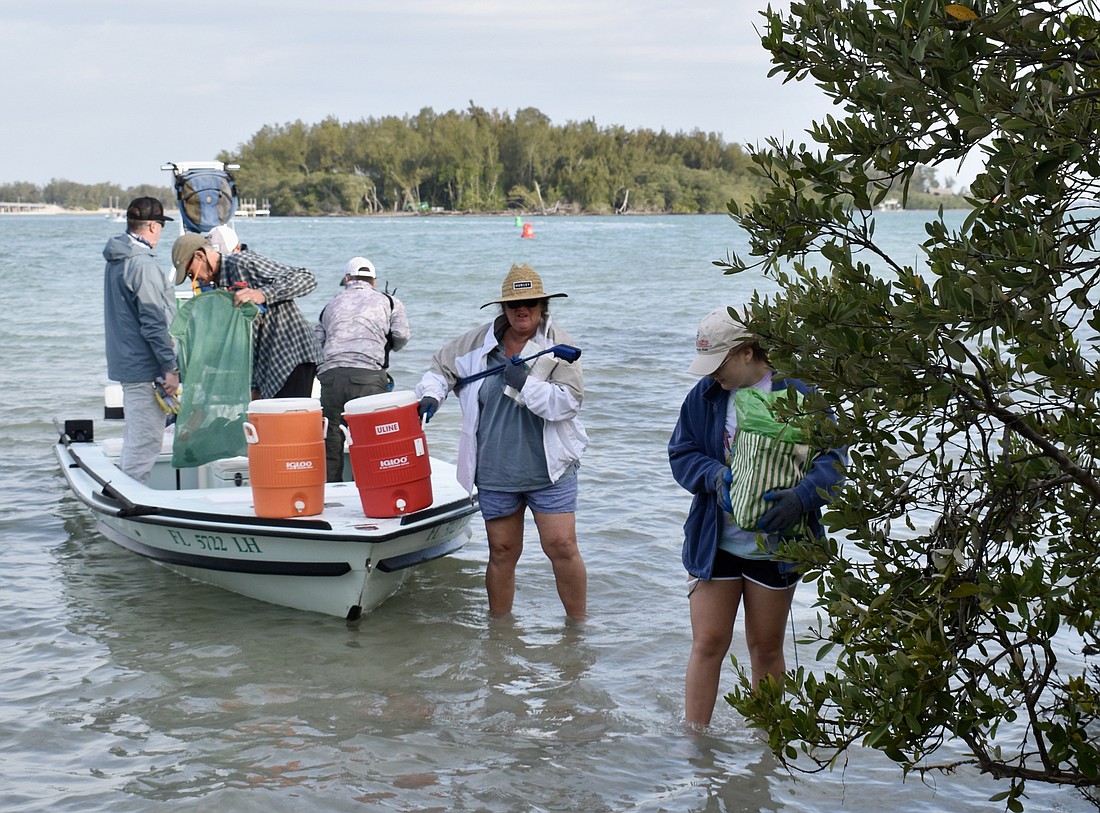- April 19, 2024
-
-
Loading

Loading

Skimming over a 1988 edition of the Longboat Observer, Rusty Chinnis’ eyes landed on an advertisement for the sale of the Sister Keys, a collection of four islands in north Sarasota Bay.
The advertisement prompted Chinnis to pause, recalling recent developments on adjacent Jewfish Key, which had sprouted new homes and bright blue septic tanks.
“I thought, 'Wouldn’t it be nice if one island didn’t have a house on it?'” he said.
He and a group of like-minded individuals created the Sister Keys Conservancy then lobbied politicians and hosted bake sales, fundraisers, a Music in the Park series and speaking engagements to help gain support.
The conservancy received letters of support from local organizations including The Sierra Club, The Sarasota Audubon Society, Mote Marine, Longboat Key Chamber of Commerce and Longboat Key Garden Club. Each letter touted the importance of preserving the keys and their natural beauty.
However, after two years, the group had only raised $46,000 of the $1.5 million needed to purchase the islands.
Knowing the remaining money would unlikely be raised on their own, the group turned to the town of Longboat Key for support, Chinnis said.
The town commissioners opted to transfer $929,000 from its open space acquisition fund to cover the remaining portion needed for the $975,000 offer that was accepted by the group of investors that owned the property.
On July 10, 1992, the town purchased the Sister Keys. This year, the keys are celebrating 30 years of protection from development and conservation of their natural habitats.
After the purchase, the islands were restored with native plants, wetlands, salt marsh and gopher tortoise habitat with the help of the real estate branch of the St. Joe Paper Co. in 2006.
“I think it’s critical that we look to places like the Sister Keys to realize how an area can be rehabilitated, how it can be brought back to a natural state with a little love and care,” Chinnis said.
Before the town purchased what we now know as the Sister Keys, a map from the 1890s depicted the islands in the early stages of the Gulf Intracoastal Waterway, calling it the Otter Keys.
In the 1960s, the islands were owned by a group of investors that intended to create a tropical resort called Shangri Isles. If it went through, the development would have transformed the keys into a marina, an 18-hole golf course, luxury homes, a hotel and an even an airport.
After the development fell through, it was years later that the islands went back on sale, marketed as a “tropical paradise.”
Since the purchase of the islands, locals have banded together to participate in an annual clean-up of the islands sponsored by Sarasota Bay Watch and Suncoast Waterkeeper. The cleanup, which typically occurs in early April, focuses on removal of invasive plant species and trash that has ended up on the shores, either on the tides or left behind by visitors.
Beer cans, bottles, food wrappers, lounge chairs and lumber are among the typical items pulled from the islands by cleanup crews. Less common, but not unheard of, include golf balls and an American flag or two.
Still, the islands remain as Chinnis hoped they would remain 30 years ago.
“It’s just so amazing to me, what can be done if you just give nature a chance,” Chinnis said. “It has turned into a really vibrant habitat.”
When the initial removal was done, Australian Pine trees and Brazilian pepper trees were of primary concern. Both species prohibit native plants and vegetation from growing as they overtake the areas they are planted.
Although the group still keeps a watchful eye on the potential reappearance of both plant species, the most recent cleanup focused on removing vines of vinca, more commonly known as periwinkle.
Participation in the annual cleanups is typically limited to between 75 to 100 volunteers.